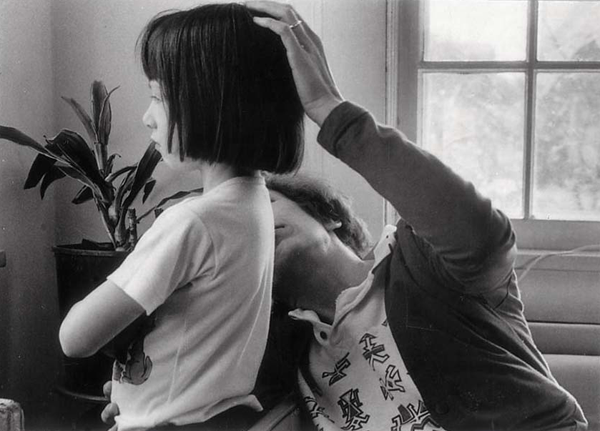Letting Go of the Stresses of the Day

We encounter stressful situations every day; it's part of life. Starting anything new will trigger many stress responses. At the end of summer, as children return to school, we can assume there will be stresses and look for ways to help.Any and every symptom can be created by stress, but children will have their own way of expressing it. They may become irritable and angry, sad and withdrawn, act out, or have physical symptoms such as a headache or stomach ache.
Learning an effective response to stress is not a sentimental issue, for it affects learning, intelligence and every aspect of our relationships. Long term, unrelieved stress leads to a breakdown of the immune system’s ability to clear toxins from the body. Words can help, but nothing will penetrate to the core as surely as focused loving touch.
When my children were young I would ask them "How was school today?" and they would reply "Okay". Until I sat next to them at bedtime and massaged their stomach or back. Then they would open up, telling me sorrowfully about how they didn't get recess after lunch because someone talked in line while they were waiting to go outside.
As little as five minutes of calm, caring touch can change the physiology of the body by reducing stress hormones and activating inner pain relievers. This can be a very general approach. The key to success is awareness, rhythmical gentle contact, and enough time to produce a response.
Some guidelines for using touch with your child:
1. Before you begin, focus your own mind and body so you can be fully present for the receiver. Become aware of your breathing with three long, slow exhalations. Warm your hands by rubbing them together briskly. Find a quiet space; just before bedtime is often ideal. Let the child know you'd like to give them a gentle massage and where you'll place your hands. Stomach, low back, legs and hands are generally acceptable.
2. Don't resist resistance. If a child says no or gets agitated when you try to massage them, don't fight it. Maybe try later. Or sit there and breathe in harmony with them. Your calm energy will help to calm your child even if you're not touching them, according to research by the Institute of HeartMath, where they study the connection between hearts and minds.
3. Take a moment to observe the receiver. How is he breathing? Is there visible muscular tension? Is there fidgeting or restlessness?
4. Make physical contact. Apply gentle, rhythmical pressure through clothing. Clockwise circles around the navel will activate rest-digest mode, and it's an easy place to access while a child is lying in bed. One client of mine did this with her child who tended toward ADHD. He liked it a lot and asked for it every night at bedtime, joking with her that the only downside was that his belly-button might fall off! Eventually he learned to do it for himself as a way to relax. Teachers reported an improvement in his behavior at school.
Alternately, you could palm down the outside of the leg, or massage the feet and toes. Go slowly, take your time, don't have expectations about what might happen.
5. When you feel you're finished, remove your hands with awareness, then sit back and observe the recipient again. Appreciate small change, such as a slower breathing rate, a smile, a happy looking sleepiness. Don't be surprised if sorrows are revealed. Maintain your calm attitude and listen whole heartedly. Make notes about actions you might need to take at another time. For instance, we eventually took both of our daughters out of the local school where they punished everyone for one kid's bad behavior.